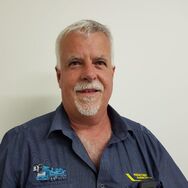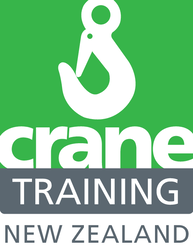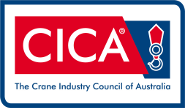|
The Crane Association’s new Chief Executive, Sally Dunbar, and Immediate Past President, Scott McLeod, had a very beneficial visit to Australia in recent weeks.
Visiting the Crane Industry Council of Australia (CICA), the pair were quite impressed by their operating licencing system, called Crew Safe. CICA expressed an offer to assist us devise a similar platform, so we will continue to keep you updated with our ongoing progress. The 2019 CANZ Conference, scheduled for July 17-19, is to be held at the Marlborough Convention Centre in Blenheim. It will be a celebration of all the hard graft that goes on throughout our industry, so if you haven’t registered yet, do so now as registrations are nearly full. >> Click here to read more. Knowledge is power – and no more so than in the crane industry – but so too is sharing that information.
Immediate Past President and Managing Director of McLeod Cranes Ltd, Scott McLeod, says sharing skills throughout the industry is one of the greatest benefits of being a Crane Association member. It is also a passion of his that, as many might know, grew out of a near miss nearly seven years ago that involved inconsistent lift plans. Having learned valuable lessons following the incident, Scott and Director Peter McLeod reviewed other industry lift plans and jointly developed a new plan. That industry standard lift plan went on to win the MSA Safety Leadership award in the 2013 Site Safe Construction Health and Safety awards. >> Click here to read more. Had you seen them arrive, it would have been a sight to marvel at – three 2,100 tonne cranes arriving via large ship into Waitemata Harbour from China.
At $20 million each, they were the newest addition to the Ports of Auckland (POA) suite of five other cranes, received in October 2018. Complete with full LED lighting and solar panels installed on the roof of the machine house, dual twin spreaders, and standing at 82.3 metres high to the apex – the driver’s cab sits more than 10m higher than POA’s current cranes. One day, Renee Nepia hopes to call one of those cabs – and any others should the opportunity arise – her office. >> Click here to read more. The Australian Standards for cranes are being transformed to make them more relevant for developments in crane technology. Australia and New Zealand has a joint Standards committee for cranes, ME005. John Miller (Ports of Auckland and former CA Councilor) is the CA nominated committee member. The other NZ committee members are nominated by Work safe NZ and Engineering NZ. There are two series of standards, AS1418 (technical specifications) and AS2550 (safe use practice). AS2550 is equivalent to the NZ Approved Code of Practice Cranes. The joint AS/NZS standards are for Elevating Working Platforms and Vehicle Loading Cranes. All other standards are Australian only.
>> Click here to read more. In a recent case, a South Island construction company was found to have breached its health and safety obligations following a vehicle accident which resulted in the worker being crushed and killed. The worker was driving a dump truck which veered off the road and down a bank in June 2017.
Following a WorkSafe investigation, the company was found to have: ·Failed to communicate, monitor and enforce vehicle policies, including ensuring workers wore seatbelts and had appropriate licenses for the vehicles they were driving (in this case the worker was not licensed to drive the truck which weighed more than 6 tonnes); ·Allowed the worker to drive trucks on numerous occasions despite being aware of his inexperience and there being risks from driving on dangerous roads in the area. The company was ordered to pay a fine of $351,563, reparations of $177,735 and costs of $3,500. If your workers are using vehicles as part of carrying out their duties, it is therefore important that you: ·Have appropriate vehicle use policies in placeand ·Ensure all workers are informed as to the contents of those; and ·Monitor compliance with the policies; and ·Enforce the policies. The above article was supplied from the May 2019 E2 Law Employment Email. (21 May 2019).  As the President, it is with great pleasure that I can start my first Word from the President by introducing our new Chief Executive, Sally Dunbar. She replaces Rod Auton who has made an outstanding contribution to the Crane Association for nearly six years. Please join me in wishing Rod all the best in his retirement. Sally comes to us from the New Zealand Institute of Building Surveyors, and we’re blessed to have her wide tranche of industry association experience utilised as CEO. She will help us to develop a new licence that will not only benefit Association members, but the industry as a whole. If you are not aware, the Pressure Equipment Cranes and Passenger Ropeways regulation is being replaced - this is resulting in a call for some form of Operator licensing. WorkSafe NZ has many options to consider, which we are all to happy to be involved with. We place a great deal of emphasis on training and safety, and we continue to succeed in raising the standards of operation and efficiency across the crane industry. So, we want to ensure we are leaders in this process – informed by consultation submitted by members and the industry. Who else knows more about the industry than you, our members, and others within the industry? Being proactive about this issue will be important in allowing us to comprehensively inform regulators about what the industry requires from its licenced operators. The best approach is to produce a licence that is fit for our industry – one that we have played a leading role in developing, rather than having one imposed on us. We also know of some organisations that are attempting to create a licence, so if we don’t proceed with some haste, then we may lose our chance to create an industry-led licence. And the association is best suited to do this because our members are on the frontlines. Sally will soon visit her Australian counterpart to get information on this issue. The Crane Industry Council of Australia’s Chief Executive Brandon Hitch will help us ensure that we don’t make the same mistakes they made, and there might even be some uniformity of standards. Following the Australian visit, findings will be presented to members and Council for consideration. On to other industry related news, the majority of you have enjoyed a Road User Charge (RUC) refund. However, I feel that there are some more areas to address with the NZTA regarding how the RUC rate is set, and this should be raised at the upcoming conference. Watch this space. Another issue to keep our eyes on is the NZTA proposed amendments to the Land Transport (Driver Licensing) Rule 1999. These will simplify and standardise the driver licensing system, facilitate the move to a digital licensing environment, improve the customer’s experience, support the productivity of the commercial driving sector, and strengthen the driver training and testing regime. As we will be a significantly affected party, we would like to work with the Agency in this reform. So, we’ll be representing the industry and input from members is always appreciated. But looking into my crystal ball, I feel confident for our Association’s future. Personally, I’m excited about encouraging more younger people into our industry, and I’m beginning to see more millennials who are proving to be great employees. And as I’m slowing down in my own participation within the industry, I’m seeing more of these young guys develop their skill-sets to contribute in meaningful ways. This may come down to society’s views on the trades – they are becoming sexy again. Being a licenced operator is no small feat; it is a measure of one’s success, too. |
Archives
June 2023
Categories
All
|
|
|
|
NZBN: 9429042812272
The Crane Association of New Zealand (Inc.) has membership or reciprocal membership with the following associations

 RSS Feed
RSS Feed










